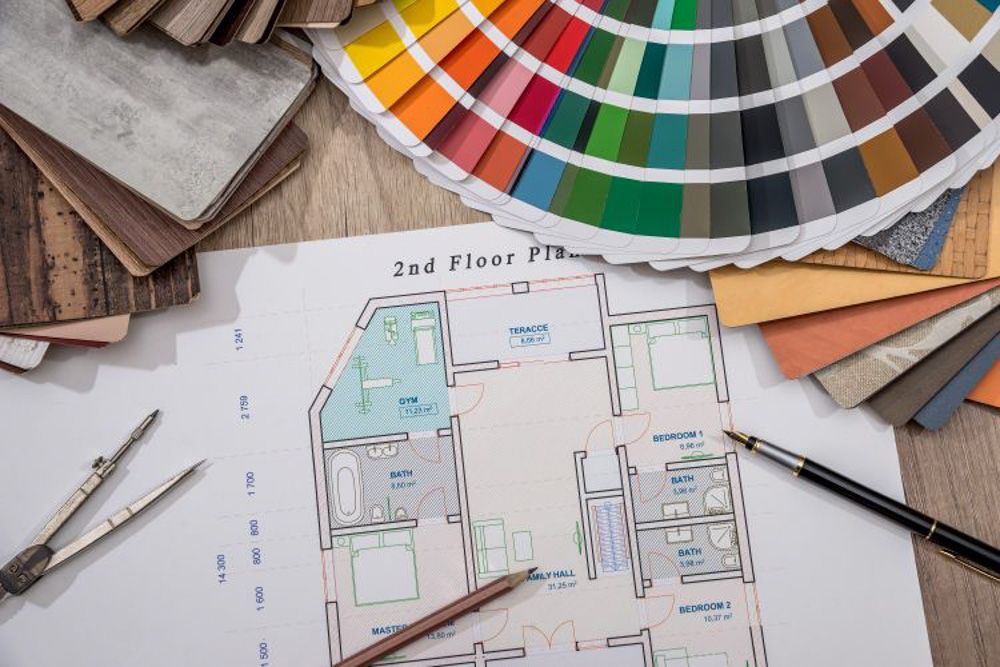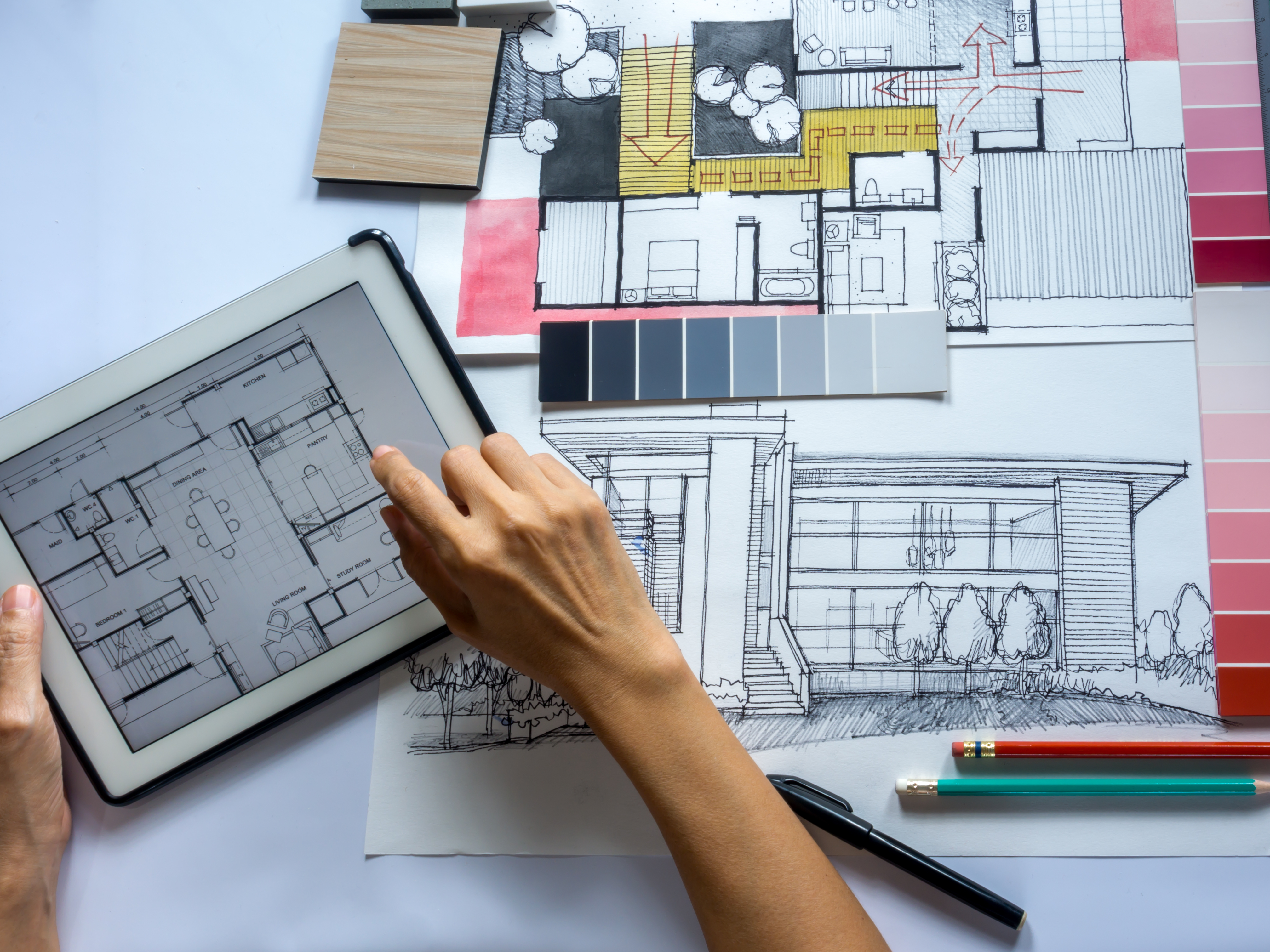Modern Hampshire Design Specialists Specializing in Sustainable Homes
The Art of Balance: Exactly How Interior Design and Home Engineer Collaborate for Stunning Results
In the realm of home design, striking an equilibrium in between appearances and capability is no tiny task. This fragile balance is accomplished through the harmonious collaboration in between interior designers and designers, each bringing their special knowledge to the table. Stay with us as we check out the complexities of this collaborative process and its transformative influence on home layout.
Understanding the Core Distinctions Between Interior Design and Home Style
While both Interior Design and home style play essential functions in producing aesthetically pleasing and practical rooms, they are inherently different disciplines. Home architecture mainly concentrates on the architectural elements of the home, such as developing codes, safety and security regulations, and the physical building and construction of the room. It handles the 'bones' of the structure, collaborating with spatial dimensions, bearing walls, and roofing designs. On the various other hand, Interior Design is extra concerned with enhancing the aesthetic and sensory experience within that framework. It involves picking and organizing furnishings, choosing color design, and including decorative components. While they work in tandem, their duties, responsibilities, and locations of competence deviate substantially in the creation of a harmonious home setting.
The Harmony Between Home Design and Interior Decoration
The synergy between home design and Interior Design depends on a common vision of design and the enhancement of practical aesthetics. When these two areas straighten sympathetically, they can change a home from average to phenomenal. This collaboration requires a much deeper understanding of each self-control's concepts and the capability to create a cohesive, cosmetically pleasing setting.
Unifying Layout Vision
Linking the vision for home style and Interior Design can create a harmonious home that is both practical and cosmetically pleasing. The equilibrium starts with an incorporated mindset; designers and interior designers work together, each bringing their experience. This unison of concepts creates the layout vision, a plan that guides the job. This shared vision is vital for consistency throughout the home, guaranteeing a fluid transition from exterior style to indoor areas. It advertises a synergistic approach where architectural components enhance Interior Design elements and vice versa. The outcome is a natural living area that shows the property owner's lifestyle, preference, and character. Therefore, unifying the design vision is crucial in mixing design and Interior Design for magnificent results.
Enhancing Useful Looks
Just how does the harmony in between home style and interior style enhance practical visual appeals? Engineers lay the groundwork with their structural layout, guaranteeing that the area is functional and reliable. A designer might develop a home with high ceilings and huge home windows.
Significance of Collaboration in Creating Balanced Spaces
The cooperation in between interior developers and engineers is essential in creating well balanced spaces. It brings harmony between design and style, bring to life rooms that are not just visually pleasing but also useful. Checking out effective collaborative strategies can provide insights right into exactly how this harmony can be properly accomplished.
Integrating Design and Style
Equilibrium, a necessary element of both Interior Design and architecture, can just absolutely be achieved when these two areas operate in consistency. This harmony is not simply an aesthetic consideration; it company website impacts the functionality, sturdiness, and eventually, the livability of a room. Interior developers and architects should recognize each various other's roles, respect their experience, and connect effectively. They have to consider the interplay of structural components with decoration, the circulation of rooms, and the effect of light and color. This joint procedure causes a natural, balanced layout where every element has a purpose and adds to the total visual. Harmonizing layout and style is not simply about creating attractive areas, yet concerning crafting rooms that function effortlessly for their inhabitants.
Effective Collaborative Techniques

Instance Studies: Effective Integration of Style and Style
Examining a number of instance research studies, it ends up being apparent how the successful integration of Interior Design and design can change a space. The Glass Home in Connecticut, renowned for its minimalistic beauty, is one such example. Architect Philip Johnson and interior designer Mies van der Rohe worked together to create an unified balance between the interior and the framework, resulting in a seamless flow from the exterior landscape to the internal living quarters. An additional prototype is the Fallingwater Residence in Pennsylvania. Engineer Frank Lloyd Wright and indoor developer Edgar Kaufmann Jr.'s collaborative initiatives cause an amazingly special home that blends with its natural environments. These instance research studies underscore the profound impact of an effective layout and design cooperation.

Getting Rid Of Challenges in Style and Style Partnership
In spite of the undeniable benefits of an effective partnership between Interior Design and style, it is not without its difficulties. Communication issues can emerge, as both celebrations may make use of different terminologies, understandings, and strategies in their work. This can lead to misconceptions and hold-ups in project completion. Another major obstacle is the balancing act of aesthetic appeals and performance. Engineers go to website might prioritize architectural stability and safety, while designers concentrate on convenience and style. The integration of these goals can be complex. In addition, spending plan and timeline restrictions commonly include pressure, potentially causing breaks in the partnership. For that reason, efficient communication, shared understanding, and compromise are essential to overcome these difficulties and attain a unified and effective partnership.

Future Fads: The Advancing Connection Between Home Architects and Interior Designers
As the globe of home style continues to progress, so does the relationship between designers and indoor designers. On the other hand, interior developers are accepting technological facets, affecting general design and performance. The future guarantees a much more cohesive, innovative, and adaptive approach to home layout, as designers and architects continue to obscure the lines, cultivating a partnership that genuinely symbolizes the art of balance.
Conclusion
The art of equilibrium in home layout is accomplished through the unified cooperation between interior developers and designers. An understanding of each other's disciplines, reliable interaction, and shared vision are important in creating aesthetically sensational, practical, and inviting rooms. In spite of challenges, this collaboration fosters development and advancement in design. As the partnership between home architects and indoor designers advances, other it will certainly remain to form future trends, boosting comfort, performance, and personal expression in our living rooms.
While both indoor style and home style play vital roles in producing cosmetically pleasing and practical spaces, they are inherently various disciplines.The harmony in between home architecture and indoor layout lies in a common vision of layout and the enhancement of practical aesthetic appeals.Linking the vision for home architecture and indoor layout can produce an unified living room that is both functional and visually pleasing. Hence, unifying the design vision is important in mixing architecture and interior style for magnificent results.
Exactly how does the harmony in between home style and interior design improve useful visual appeals? (Winchester architect)